We fly to Mendoza, a city of 800,000 people situated 1,100km west of Buenos Aires at the foot of the Andes. We have come here to taste the wines from the largest wine-producing area in Argentina. Besides wine, Mendoza is famous for being the point at which the liberator, Jose de San Martin set out to cross the Andes with an army to liberate Chile (having already liberated Argentina from the Spanish in 1810). He was a busy chap because he also liberated Peru before deciding that he had had enough of campaigning and retired to France (of all places) where he died in Boulogne sur Mer.
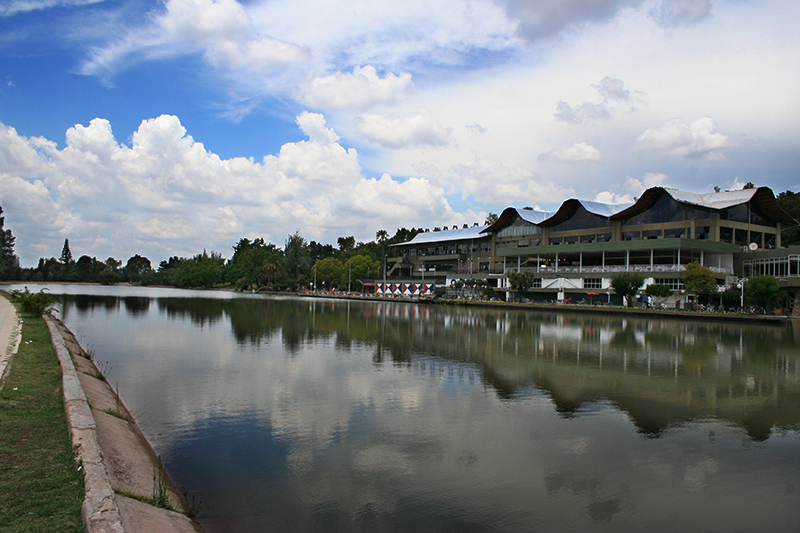 The city was destroyed by earthquake and fire in 1861 and today it is a modern looking place with wide avenues and low buildings (as a precaution against further earthquakes) thickly planted with trees and gardens. It is something of an oasis as the whole of the surrounding area, other than the vineyards, is desert. Water is a constant concern with the farms and houses being supplied from underground rivers but the growing demand from ever-increasing wine production and expanding urbanization will, at some point, bring a crisis.
The city was destroyed by earthquake and fire in 1861 and today it is a modern looking place with wide avenues and low buildings (as a precaution against further earthquakes) thickly planted with trees and gardens. It is something of an oasis as the whole of the surrounding area, other than the vineyards, is desert. Water is a constant concern with the farms and houses being supplied from underground rivers but the growing demand from ever-increasing wine production and expanding urbanization will, at some point, bring a crisis.
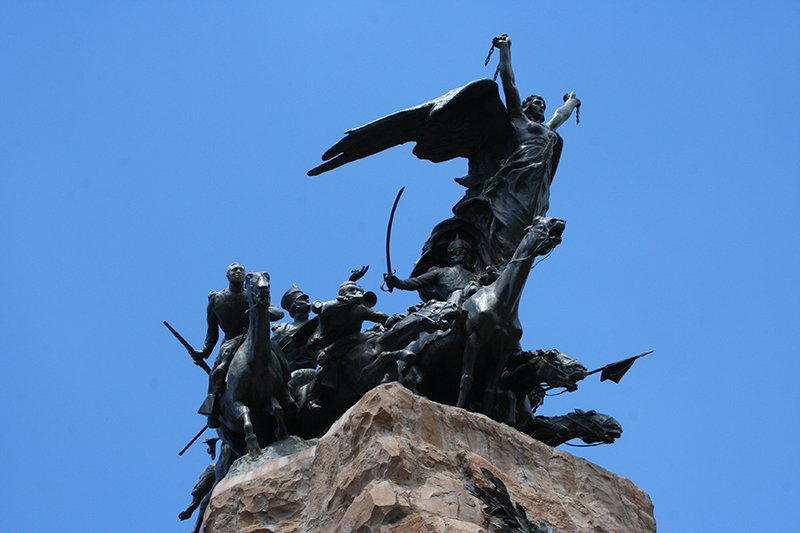 There is a wonderful park that is as big as the city itself complete with every conceivable sport and leisure facility including a sculling lake and a museum with dinosaur skeletons (that was shut when we forced entry). On a hill in the middle is a magnificent statue to General San Martin and the army he led over the Mountains. Around the base is a frieze depicting the story of the assembly of the troops from the women of the town donating their jewellery to the march itself. The figures are all in bronze mounted on a mammoth piece of stone with steps on all sides and lights to illuminate it all at night. What a piece of work! Why can’t we have monuments like this?
There is a wonderful park that is as big as the city itself complete with every conceivable sport and leisure facility including a sculling lake and a museum with dinosaur skeletons (that was shut when we forced entry). On a hill in the middle is a magnificent statue to General San Martin and the army he led over the Mountains. Around the base is a frieze depicting the story of the assembly of the troops from the women of the town donating their jewellery to the march itself. The figures are all in bronze mounted on a mammoth piece of stone with steps on all sides and lights to illuminate it all at night. What a piece of work! Why can’t we have monuments like this?
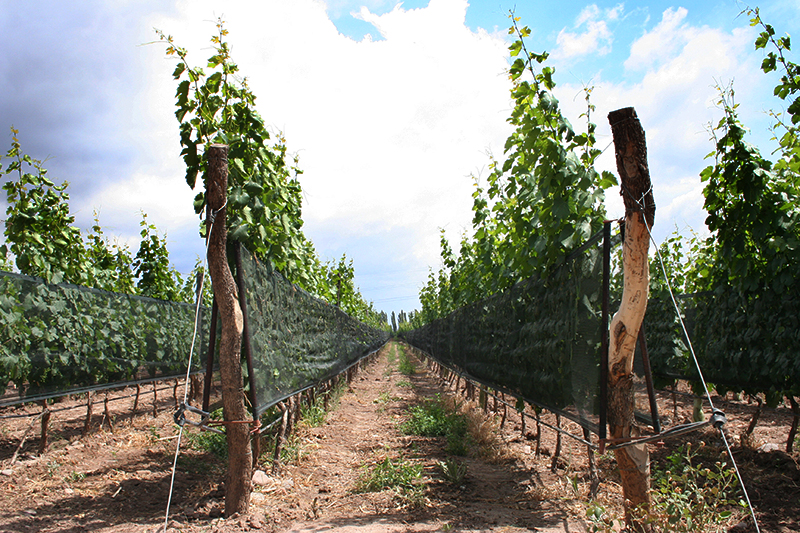 Besides wine, tourism is the main industry although they are still learning how to do it. It is not possible to turn up at a winery to look around or taste their produce. The gates to the estates are firmly locked and access can only be made if a tour is already booked. On the other hand, the tours are informative and fun without any pressure to buy anything, not that it is possible to purchase the odd bottle of wine anyway as they do not have shops.
Besides wine, tourism is the main industry although they are still learning how to do it. It is not possible to turn up at a winery to look around or taste their produce. The gates to the estates are firmly locked and access can only be made if a tour is already booked. On the other hand, the tours are informative and fun without any pressure to buy anything, not that it is possible to purchase the odd bottle of wine anyway as they do not have shops.
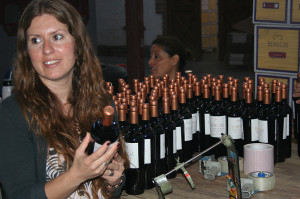 Unfortunately for Debbie it is a red wine-producing area — whites being better from the Chilean side of the mountains (not that Argentineans have much interest in anything other than red wine in any case). The grape they use here is Malbec, originally introduced from Europe, and one that the French would only consider using for blending. I can see their point as I did not take to any of the wines I tasted including those at £35 a bottle.
Unfortunately for Debbie it is a red wine-producing area — whites being better from the Chilean side of the mountains (not that Argentineans have much interest in anything other than red wine in any case). The grape they use here is Malbec, originally introduced from Europe, and one that the French would only consider using for blending. I can see their point as I did not take to any of the wines I tasted including those at £35 a bottle.
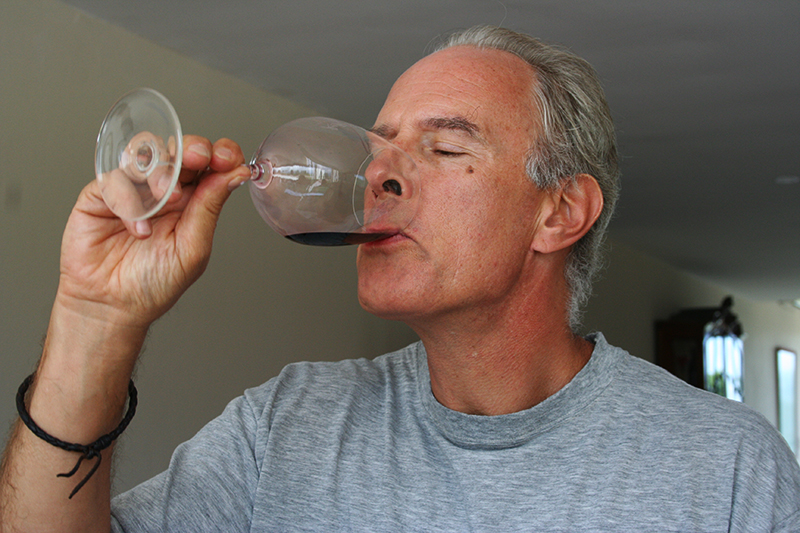 The three wineries we visited were quite a mixture. The first was a boutique vineyard, Bodega Benegas, producing a mere 150,000 litres a year using traditional techniques. It was a charming place with no expense spared and very firm ideas as to how wine ought to be made. Even the labelling was done by hand. I got the strong impression that the owner, a chap who had made loads of money from other activities, was interested in a trophy business and was not bothered if it made any money. At the tasting session, we were obviously supposed to swallow the wines and, despite being 10:30 in the morning, we did so (not wishing to upset our host).
The three wineries we visited were quite a mixture. The first was a boutique vineyard, Bodega Benegas, producing a mere 150,000 litres a year using traditional techniques. It was a charming place with no expense spared and very firm ideas as to how wine ought to be made. Even the labelling was done by hand. I got the strong impression that the owner, a chap who had made loads of money from other activities, was interested in a trophy business and was not bothered if it made any money. At the tasting session, we were obviously supposed to swallow the wines and, despite being 10:30 in the morning, we did so (not wishing to upset our host).
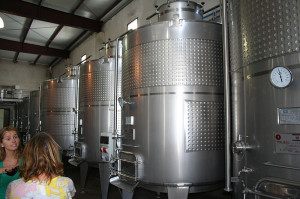 The second winery was much more commercial producing 1.5 million litres a year. None of the old concrete vats here: stainless steel, temperature-controlled, sterile, the business was intended to make money. Oddly called ReNacer (re-born), the marketing speak described it as being ‘born in the point where the heart meets the sky’. I suspect the words sound better in Spanish. After a quick tour, we were taken to the tasting area and, before we were allowed to sample the finished wines, we were given three different young wines to try and blend for ourselves. It was startling just how much it was possible to change the taste by blending different portions of each of the three base liquids. It was also a good demonstration that it is impossible to make a decent wine from poor ingredients as I thought all three base wines were horrible.
The second winery was much more commercial producing 1.5 million litres a year. None of the old concrete vats here: stainless steel, temperature-controlled, sterile, the business was intended to make money. Oddly called ReNacer (re-born), the marketing speak described it as being ‘born in the point where the heart meets the sky’. I suspect the words sound better in Spanish. After a quick tour, we were taken to the tasting area and, before we were allowed to sample the finished wines, we were given three different young wines to try and blend for ourselves. It was startling just how much it was possible to change the taste by blending different portions of each of the three base liquids. It was also a good demonstration that it is impossible to make a decent wine from poor ingredients as I thought all three base wines were horrible.
As we went through the wines, we were asked what smells and tastes we detected. We were supposed to say things like blackberries, cherry and blueberry with an aftertaste of strawberry, raspberry and chocolate. When I said I thought it tasted like vinegar we were thrown out.
Finally, we ended up at a winery called Ruca Malen where, apparently, a legend was waiting for us. Instead of a wine tour we had five course lunch with each plate paired with one or two different wines from their bodega. We were given a sheet of paper detailing the food and each wine along with a description of how wonderful the latter were. This was quite helpful, for the first time that day I did not have to guess the smells and flavours I was supposed to be experiencing. They even had a Chardonnay and a Sauvignon blanc to suit Debbie who, by this time, had ‘drunk more than enough red wine thank you very much’. It was a very enjoyable luncheon but the food somewhat outstripped the wine.
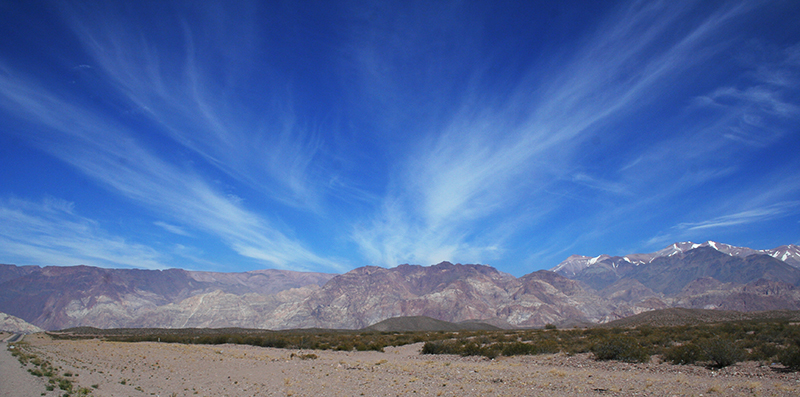 Being so close to the Andes, we took the opportunity to spend some time up in the mountains. The area around Mendoza is flat with the odd pimple of higher ground here and there rather like the chest of a Thai girl (so I’m told). You have to travel for several hours over the plains to reach the Andes. Then the mountains are all the more impressive as they stretch heavenwards from nearly sea level to a height of over 3,000m to finish in snow capped peaks as they guard Argentina from their Chilean neighbours. The mountain colours change from deep reds & browns to beige, to green. The air is dry and crystal clear and it is a wonderful feeling to stand in the cold but sunny mountain climate once again. As we stand at the top of a high mountain pass with views stretching for miles in every direction there is a wonderful feeling of space and freedom that is impossible to experience in a city.
Being so close to the Andes, we took the opportunity to spend some time up in the mountains. The area around Mendoza is flat with the odd pimple of higher ground here and there rather like the chest of a Thai girl (so I’m told). You have to travel for several hours over the plains to reach the Andes. Then the mountains are all the more impressive as they stretch heavenwards from nearly sea level to a height of over 3,000m to finish in snow capped peaks as they guard Argentina from their Chilean neighbours. The mountain colours change from deep reds & browns to beige, to green. The air is dry and crystal clear and it is a wonderful feeling to stand in the cold but sunny mountain climate once again. As we stand at the top of a high mountain pass with views stretching for miles in every direction there is a wonderful feeling of space and freedom that is impossible to experience in a city.
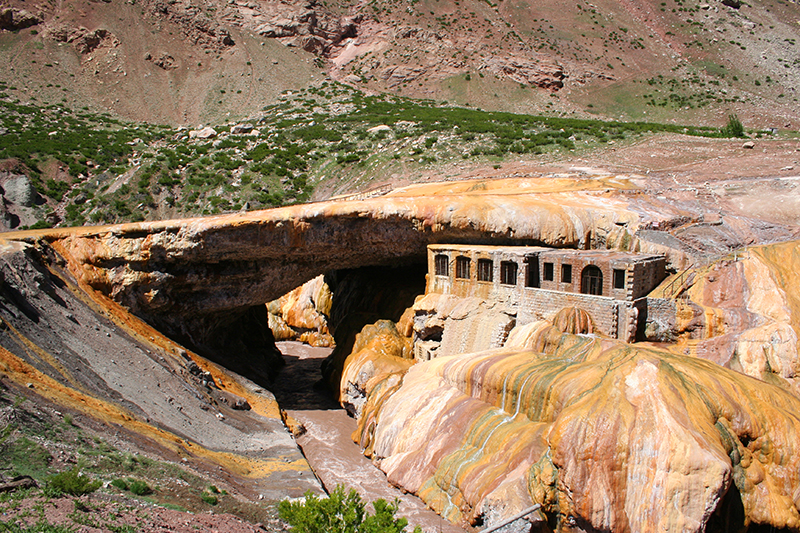 We were at the southernmost point of the Inca Empire and we stopped at the Inca Bridge formed from sediments in the soils washed down the slopes to form a natural arch over the Rio Mendoza. On our bank there were stalls selling native artefacts including footwear that had been immersed in the river for two weeks and were now totally encrusted with the yellow sediment of the waters. On the opposite bank were the remains of a hotel that had been wiped out by an avalanche next to a church that the destructive snow fall left untouched. Proof that God exists?
We were at the southernmost point of the Inca Empire and we stopped at the Inca Bridge formed from sediments in the soils washed down the slopes to form a natural arch over the Rio Mendoza. On our bank there were stalls selling native artefacts including footwear that had been immersed in the river for two weeks and were now totally encrusted with the yellow sediment of the waters. On the opposite bank were the remains of a hotel that had been wiped out by an avalanche next to a church that the destructive snow fall left untouched. Proof that God exists?
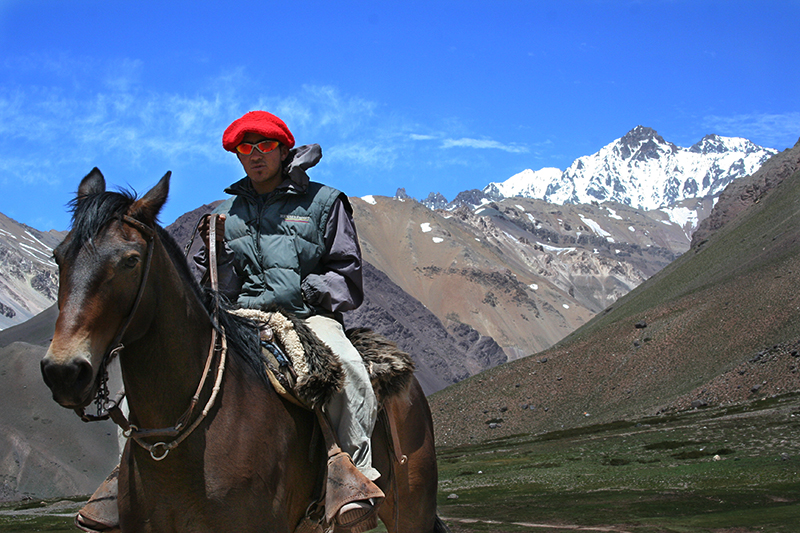 A few kilometres further was the entrance to the national park that was the start of the climb to the summit of Aconcagua, the highest mountain in the Americas standing at 6,962 metres (22,627 feet), the fifth highest peak in the world. By all accounts, climbing the north face is a real challenge and six or seven people die each year climbing the mountain. It has a wide base and two distinct peaks three or four kilometers apart that give it a horned, fierce appearance and it has a substantial glacier easily seen from way off that must be one of the few that is not shrinking. The mountain has an awesome beauty and a magnetism that made us want to get close and embrace it. However, we were a 6 hour walk from the base camp and even Debbie had to agree reluctantly that there was insufficient time to trek there and back. Next time perhaps.
A few kilometres further was the entrance to the national park that was the start of the climb to the summit of Aconcagua, the highest mountain in the Americas standing at 6,962 metres (22,627 feet), the fifth highest peak in the world. By all accounts, climbing the north face is a real challenge and six or seven people die each year climbing the mountain. It has a wide base and two distinct peaks three or four kilometers apart that give it a horned, fierce appearance and it has a substantial glacier easily seen from way off that must be one of the few that is not shrinking. The mountain has an awesome beauty and a magnetism that made us want to get close and embrace it. However, we were a 6 hour walk from the base camp and even Debbie had to agree reluctantly that there was insufficient time to trek there and back. Next time perhaps.

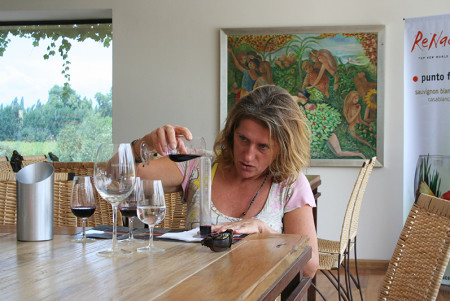
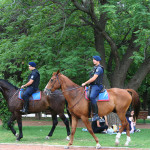
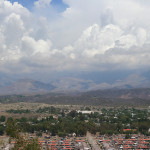
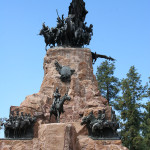
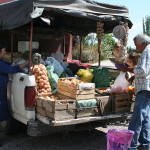
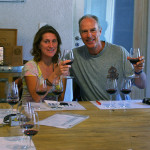
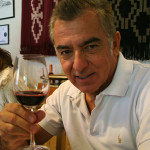
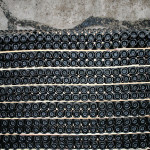
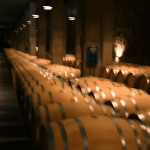
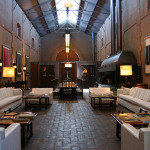
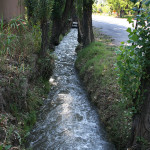
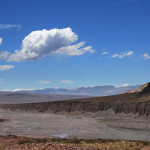
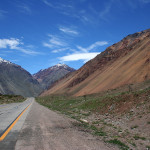
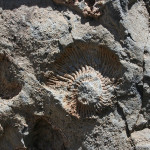
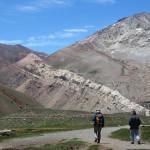
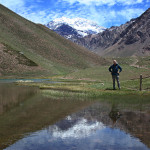
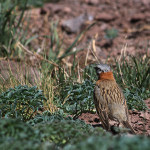
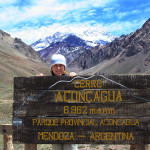
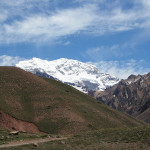
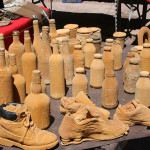
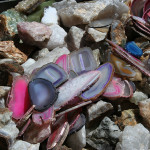
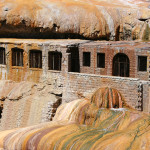
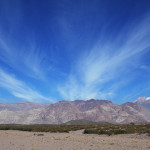
No comments yet.